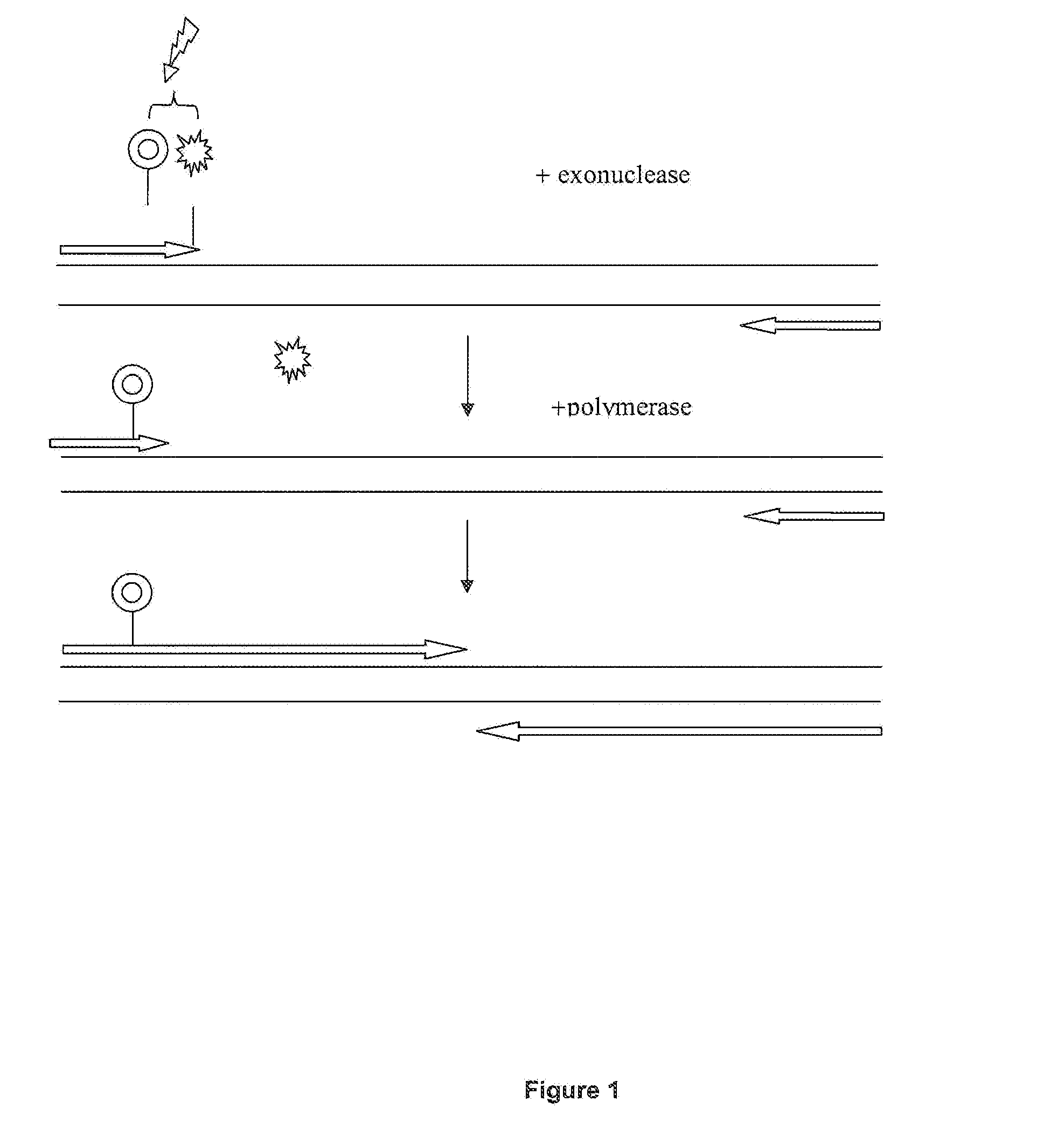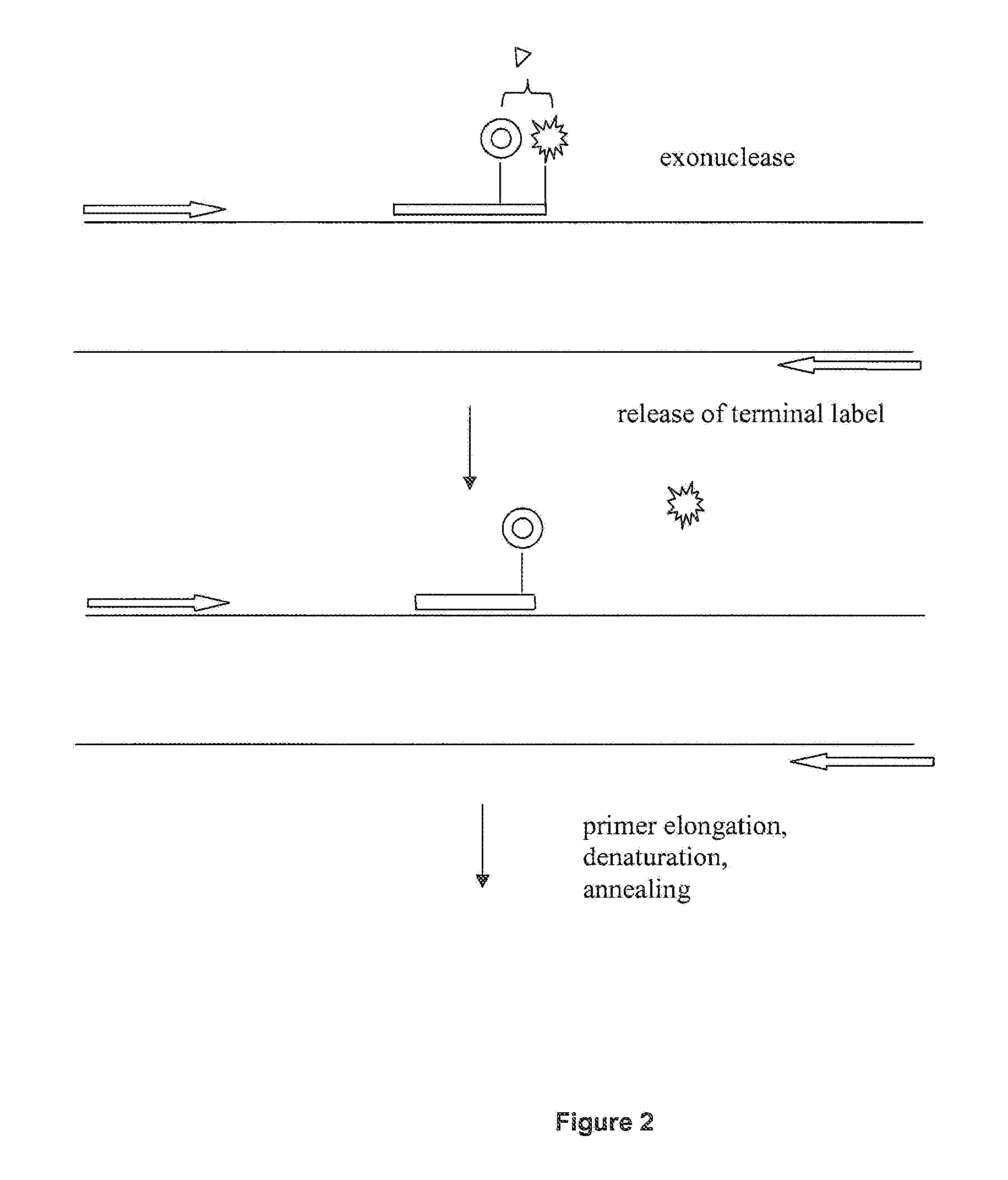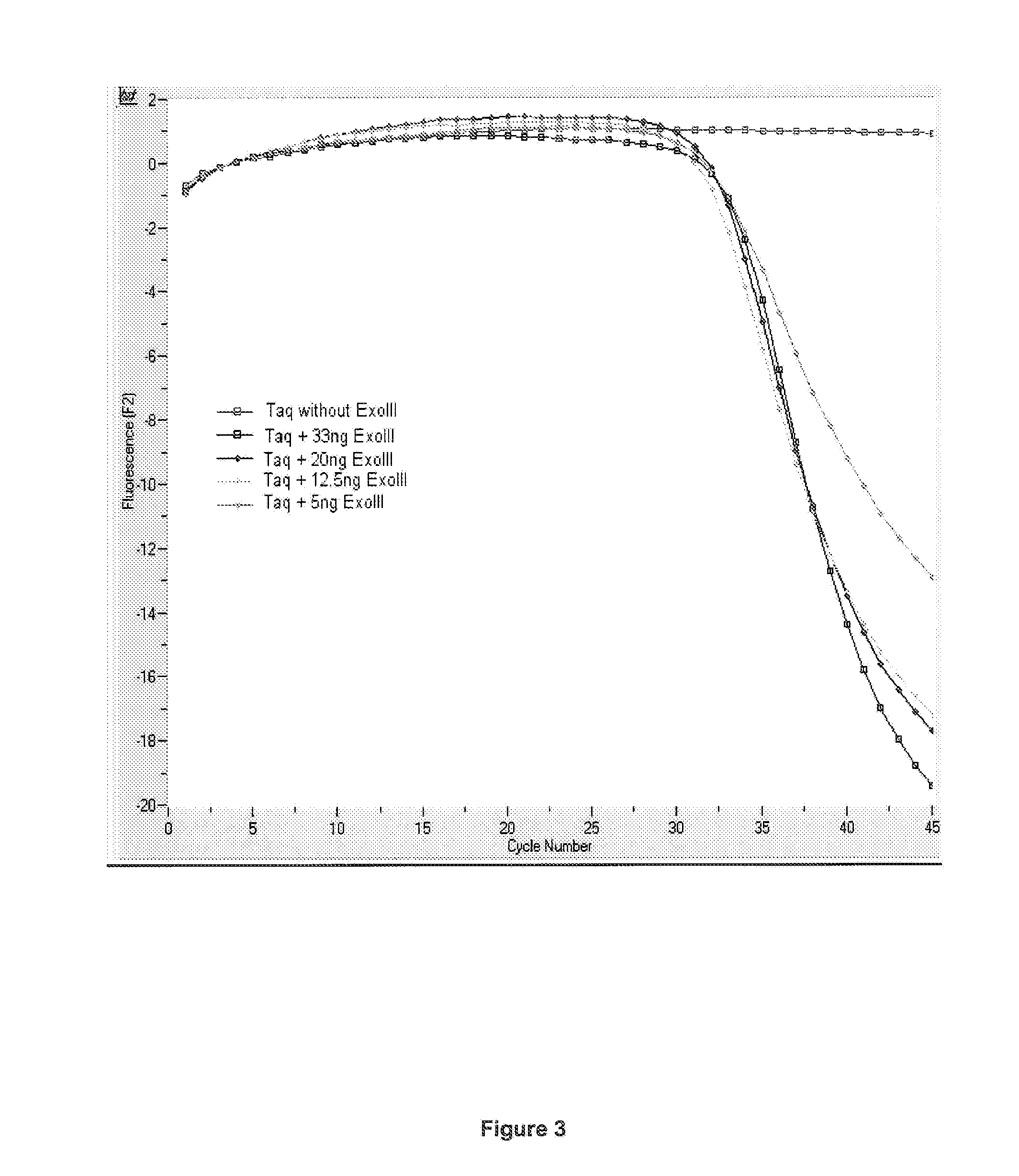Detection format for hot start real time polymerase chain reaction
a detection format technology, applied in the field of real-time polymerase chain reaction (pcr), can solve the problems of unsatisfactory use in certain applications, difficult cloning of amplified genes, and generation of unspecific amplification products
- Summary
- Abstract
- Description
- Claims
- Application Information
AI Technical Summary
Problems solved by technology
Method used
Image
Examples
specific embodiments
Example 1
[0084]For this real time PCR experiment using the FRET process, a dual labeled primer according to the invention was designed which carried an internal LC-Red 640 label (Roche Applied Science Cat. No. 2 015 161) and a 3′ terminal fluorescein label (Roche Applied Science Cat. No. 3 138 178). The terminal label was removed by exonuclease III after hybridization of the primer which resulted in a decrease in LC-Red 640 signaling and at the same time in an increase in fluorescein fluorescence.
[0085]Primers were as Follows:
“β-Actin 5.2fd”:(SEQ ID NO: 1)GGATTCCTATGTGGGCGACG“β-Actin HP25”:(SEQ ID NO: 2)CCTGGGTCATCTTCT** (Red 640)CGCGG*U*TpFluos-3′T**(Red 640) = T-LC-Red 640 (amino-modified T-phosphoramidate was introduced during oligonucleo-tide synthesis. Subsequently, the reactive aminogroup was reacted with LC-Red 640 NHS ester)U* = 2′-O-methyl-UG* = 2′-O-methyl-GP = phosphateFluos = fluorescein
[0086]Synthesis and labeling of the oligonucleotides were performed according to stan...
example 2
[0091]In another real time PCR experiment, the reaction was monitored with an oligonucleotide probe carrying an internal fluorescein and dabcyl as a 3′ terminal quencher compound. After hybridization of the oligonucleotide the terminal quencher was removed by exonuclease III which resulted in a dequenching of the fluorescein signal. The reporter groups were either located on an oligonucleotide used either as a probe (Reaction 1, “Primer 300.1+500rev+ProbeHPQ15”) or, alternatively as a primer (Reaction 2, “Primer 300.1+ProbeHPQ15”).
[0092]Primer and Probe Sequences were as Follows:
“Primer β-Act 300.1”:CACCCCGTGCTGCTGACCGAp(SEQ ID NO: 3)“β-Act 500 rev”:AGGGAGGCGGCCACCAGAAGp(SEQ ID NO: 4)“β-Actin HPQ15”:CCTGGGTCATCTTCT**(Fluos)CGCGGTTpZ(SEQ ID NO: 5)p = phosphateZ = DabcylT**(Fluos) = T-fluorescein, incorporated duringoligo-nucleotide synthesis as T-fluorescein-phosphoramidite.
[0093]PCR reactions were setup with 2 μl LightCycler FastStart Reaction Mix Hybridization Probes (Roche Applied...
PUM
| Property | Measurement | Unit |
|---|---|---|
| elongation temperature | aaaaa | aaaaa |
| temperature | aaaaa | aaaaa |
| molecular weight | aaaaa | aaaaa |
Abstract
Description
Claims
Application Information
 Login to View More
Login to View More - R&D
- Intellectual Property
- Life Sciences
- Materials
- Tech Scout
- Unparalleled Data Quality
- Higher Quality Content
- 60% Fewer Hallucinations
Browse by: Latest US Patents, China's latest patents, Technical Efficacy Thesaurus, Application Domain, Technology Topic, Popular Technical Reports.
© 2025 PatSnap. All rights reserved.Legal|Privacy policy|Modern Slavery Act Transparency Statement|Sitemap|About US| Contact US: help@patsnap.com



